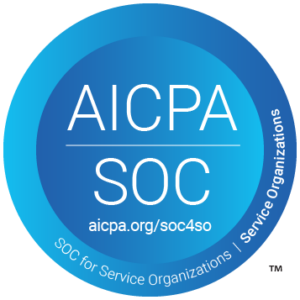Faculty and staff at West Texas A&M University view students as part of their “family community” – and making sure students are engaged and supported at every step of their higher education journey is a top priority. Yet staff were finding it increasingly difficult to connect with students. Moreover, freshman student retention rates had been stagnant for years despite repeated attempts to improve them.
First-Year Results:
Refusing to accept the status quo, the West Texas team decided to incorporate an innovative new technology as part of their efforts to centralize and improve the student experience. Equipped with a custom chatbot, powered by artificial intelligence from Mainstay, they’re engaging students like never before – and it’s showing in increased event attendance, survey responses, and student retention. After just one year, fall-to-fall freshman retention rose by over 2% and has continued to improve.
A Centralized and Streamlined Student Experience
Unlike many other institutions, West Texas A&M University (WTAMU) combines admissions, financial aid, the registrar, student affairs, and residential living under one umbrella: the Division of Student Enrollment, Engagement, and Success (SEES).
The goal is to provide a centralized and streamlined student experience, so students aren’t forced to run from department to department to get questions answered or paperwork completed. By improving students’ engagement with on-campus resources, university events, and other activities, SEES aims to increase student retention and raise graduation rates.
However, despite the team’s best efforts, there was a feeling that there had to be a better way to connect students to the school and each other. Attendance at campus events could improve. And so could responses from student surveys.
Retention rates also stubbornly refused to budge. For years, their freshman spring melt rate had held around 30%, meaning WTAMU lost nearly a third of their first-year students between fall and spring. Their fall-to-fall retention rate had been stuck in the low- to mid-60s for decades.

An Attempt to Engage Students via Social Media
The SEES team needed a way to proactively nudge students to help increase attendance, use of on-campus resources, and, ultimately, student retention. They also needed to gather student feedback in real time to better inform their decisions and initiatives.
At first, it seemed like social media might be the answer. Channels like Twitter and Facebook are part of students’ daily lives and provide the real-time engagement that WTAMU was looking for.
However, Mike Knox, the university’s Vice President of SEES, quickly found that wasn’t the case. “I was using Twitter to try to get some student engagement through social media,” he explained. “I had better success there than some, but overall, just a handful of responses most of the time.”
Kirk Daulerio, Mainstay’s co-founder, happened to see one of Knox’s messages, and reached out to brainstorm ways he might be able to help.
A New Way to Boost Student Engagement
Together, the two came up with several ideas, among them a concept to adapt Mainstay’s admissions chatbot for student engagement and retention.
Thus “Thunder” was born, WTAMU’s AI-powered chatbot for student communication, support, and engagement. Although Thunder was the first of its kind, Knox found the implementation quite easy.
“Mainstay did a great job of scraping FAQs from our website and getting us 70% of the way there,” he said, “and then we utilized a team of mostly students to fill in the rest.”
Thunder is radically different from other channels such as email or social media. With it, WTAMU staff can text thousands of students at once. They can also schedule proactive nudges hours or even days in advance, so they can message students on Saturday or Sunday without having to work over the weekend. Plus, the SEES team can check incoming student messages from one central spot, rather than needing to login to a variety of social platforms.
Perhaps even more importantly, Thunder’s artificial intelligence means it can respond to student inquiries within seconds, at any time of day or night. The chatbot started with a knowledge base of 1,200 topics (which has since grown to nearly 1,700), meaning it can provide immediate answers on a wide range of student questions. Whenever it receives an inquiry it can’t reply to, it passes the student’s message along to staff – though this happens rarely, only about two dozen times a year.
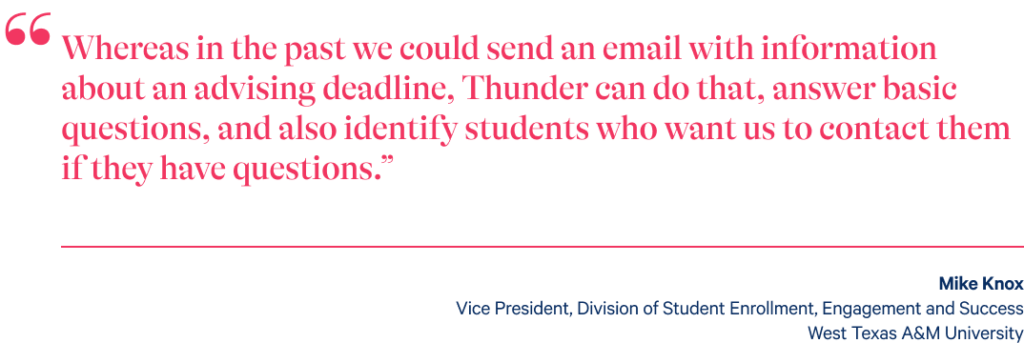
An Immediate Success for Retention and Engagement
Within the first year of implementation, WTAMU was seeing results. For the first time in as long as Knox could remember, he saw an uptick in student retention: 2.5% more freshmen returned for their sophomore fall semester. After seeing this high, positive student engagement, WTAMU expanded their chatbot communications to include the entire undergraduate study body. This time, they saw another .5% increase, showing the university is finally trending in the right direction.
This increase in retention can largely be attributed to the use of targeted, proactive nudges related to key enrollment tasks such as registering for classes and paying bills on time. Misty Hobbs, Assistant Bursar at WTAMU, noted, “Since we have utilized Thunder for billing reminders, we have seen a huge decrease in students missing payment deadlines, and an increase in students calling with specific questions rather than just being lost in our processes and not knowing where to go.” She added, “We’ve also had students tell us that they really appreciate a short text notifying them when they have been billed and when their payment is due.”

There were remarkable results with student engagement, too. For example, the SEES team used Thunder to send out a housing survey and were shocked by the high response rate – around 50%! Overall, they saw an average response rate of 27% among students contacted via Thunder.
Michelle Bonds, who joined WTAMU as the Director of Communications for SEES in Thunder’s second year of implementation, has continued to find new ways to use the chatbot to improve student engagement.
Every month, one of the university’s vice presidents sits down to have lunch with students. This is a WTAMU tradition, and yet the team had continually struggled to fill the seats. She tried email and social media with very little success. Then she sent out an invite via Thunder – and every spot was filled within ten minutes. Now invites for the monthly luncheons have gone from painful to painless.
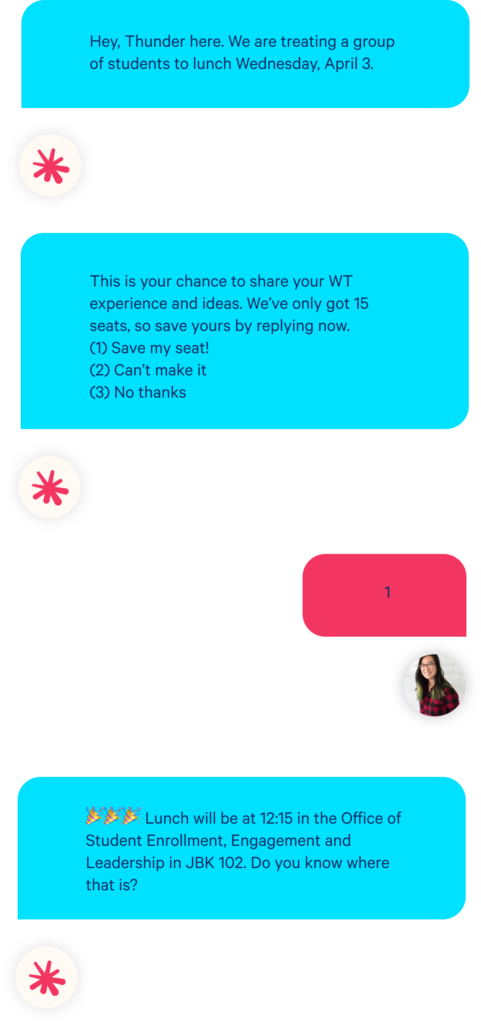
In another instance, she used Thunder to encourage students to attend a WTAMU basketball game. They had over 500 students at the on-campus event – the highest attendance all year.
For Bonds, the success isn’t just seeing more students engaging with on-campus resources and events. It’s also engaging with students that they had been unable to reach with other methods.
“It can be really easy to fall into the habit of talking to students that are already more engaged and involved. That doesn’t really give you a true picture of the entire student body,” she said. “What we’ve really seen with Thunder is that we have students that we would probably never interact with coming to our events and talking to Thunder.”
An Effective Intervention for At-Risk Students
The communication with Thunder isn’t one-way, either. Many students are taking the initiative to contact Thunder on their own. “Even when we’re not sending campaigns, students are still texting Thunder and asking Thunder questions,” said Bonds.

She believes students like Thunder because they don’t feel self-conscious about asking what they may feel are “silly” questions or admitting they’re struggling when they’re talking to a chatbot.
“We have some students that are very playful and have banter back and forth with Thunder, and then we have some students that ask questions because they’re not doing well in class or simply don’t know how to access a resource,” Bonds explained. “I really think that’s where Thunder can really benefit student engagement and retention, because students may not always feel comfortable going to somebody and asking those questions, but we still need to have the resources available so they can find the information they need. If we can get them that information, and they can start to feel comfortable, then maybe they will actually go and talk to someone.”
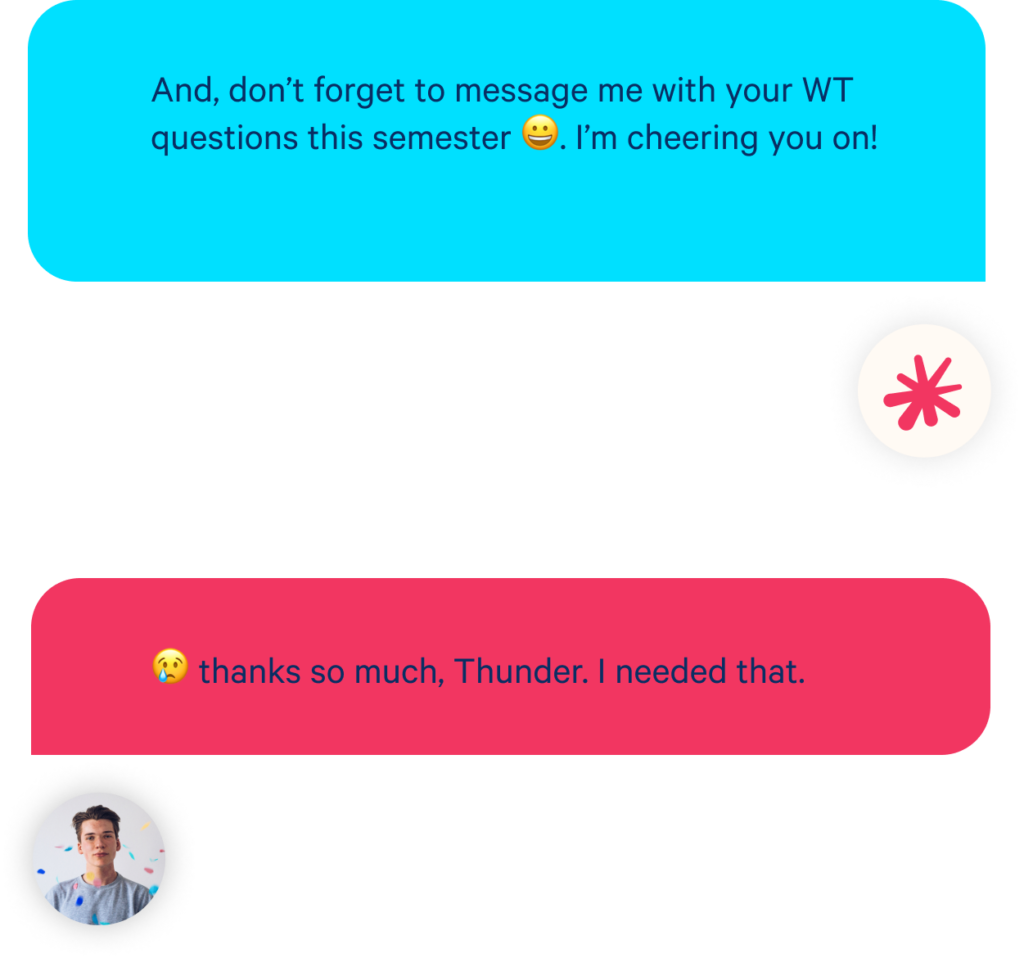
Students’ open communication with Thunder has helped SEES better identify and support at-risk students. After a survey to new freshmen revealed some students were struggling, Bonds passed their names along to different departments on campus to follow up. She feels this approach – the automated survey through Thunder and the personal follow-up from staff – is helping students be much more successful at WTAMU.
“We pretty much know why students don’t succeed, and we are pretty good about using data to pick them out or to identify at-risk groups of students,” added Knox. “But we are not as good at intervention, and AI provides a scalable way to provide interventions that are both automated, but also personal.”

A Helpful, Adaptable Resource
With Thunder, Bonds can easily review all of the conversations that students have had with the chatbot, giving her incredible insight into WTAMU students and their needs.
These insights have also helped her improve Thunder, so it can provide even better support to students. Based on the questions she’s seen asked – many of which are very specific to WTAMU and its traditions – she’s added to the chatbot’s knowledge base, enabling it to answer even more student questions.
After students indicated that Thunder’s language was too formal, sounding more like a PSA than a helpful staff member, she worked with a student committee to review the entire knowledge base. They rewrote everything with more student-friendly language so Thunder can provide a more captivating student experience.
Because of the chatbot’s machine learning and the ease of adjusting its responses, Bonds knows Thunder will only get better and better. Today, she’s able to manage the chatbot by herself, freeing up other staff for more personal interactions with students.
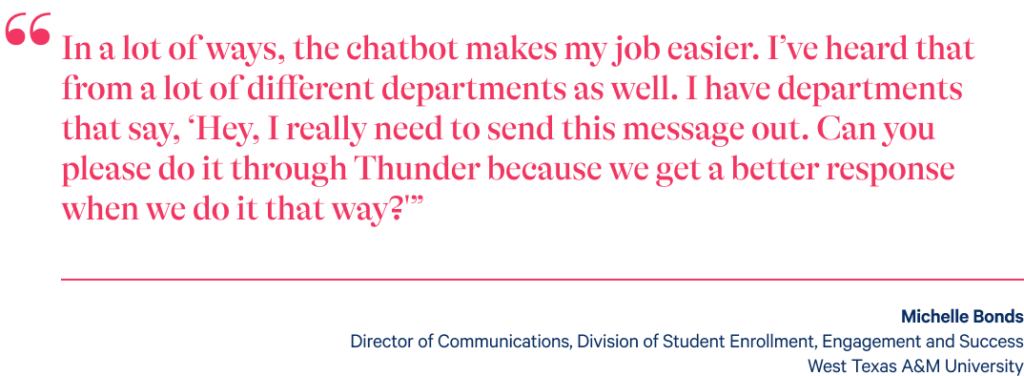
A Powerful Partnership with Mainstay
Based on the success they’ve already experienced with Thunder in its first phase with freshmen and initial expansion to include all undergraduates, WTAMU plans on expanding the chatbot’s role again. Soon Thunder will be part of the new student orientation (NSO) process, texting students prior to NSO to introduce itself. By kick-starting communication earlier, Bonds hopes this will keep students more engaged throughout the school year.
Bonds also sees a great opportunity to use Thunder over the summer to keep students engaged and ready to return in the fall.
Knox has been thrilled with the chatbot’s performance and looks forward to continuing to work with Mainstay to improve student engagement and retention at WTAMU.
“When we started with Mainstay, they were one of the only games in the AI world. There are now competitors in the market, but we are not interested in looking at other AI chatbot solutions because of the way Mainstay has been engaged in a very personalized way to our campus needs,” Knox stated. “I think we feel invested in each other’s success at this point and that makes for a powerful partnership.”
Published June 2019


